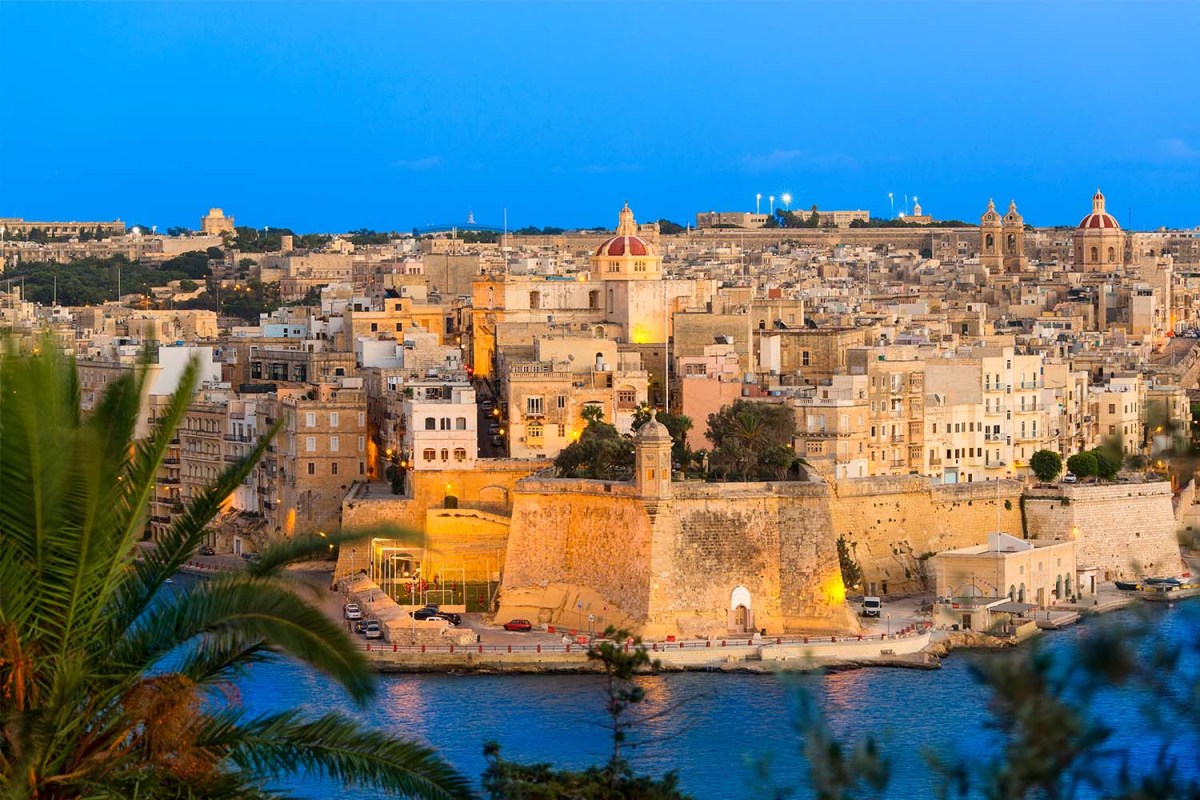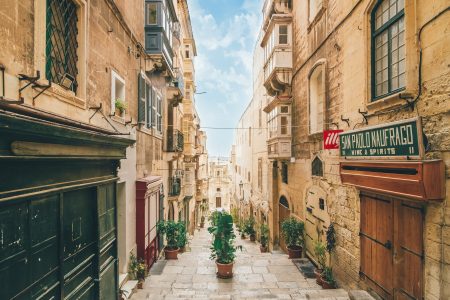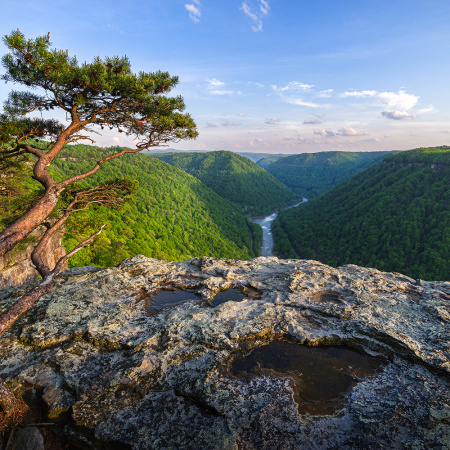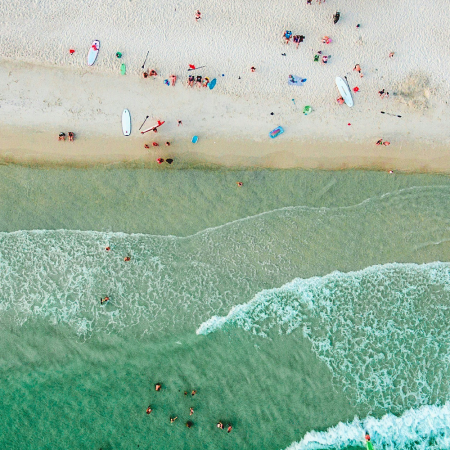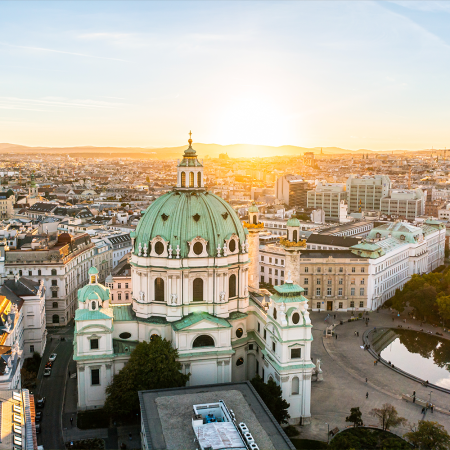Malta is a tiny pinpoint on the Mediterranean map. With about 120 square miles of land, it’s listed as the 10th smallest sovereign state in the world, and yet it’s played an outsized role in world events. Its history is unlike any other, as reflected in the intact landmarks and fortifications in and around the capital city of Valletta, as well as a collection of megalithic temples regarded as some of the oldest freestanding human constructions in the world.
Found floating between the coasts of Sicily and northern Africa, and with a succession of empires who ruled its lands (or attempted to), the Maltese story is perhaps best exemplified from the simplest of any expressions you should learn in its language: “Grazzi hafna” — or thank you very much — a juxtaposition of Romance and Arabic languages tossed together as one. Yet in addition to Maltese, English is its other official language. That sums it up, in a way.
“It’s a fascinating little island — we’re one of the most densely populated nations in the EU, and it’s just really rich in history,” says Visnja Cali, a local guide who’s been leading tours of Malta for decades.
A quick walk through Valletta helps to explain so much about the island. The enormous fortifications wrapped around steep narrow streets all look down upon the lengthy Grand Harbour, one of the largest natural harbors in the world. They’ve made Malta the perfect place to defend and roost within, a fact that’s held true from the age of the Crusades, the Knights Hospitaller and the Great Siege of Malta in 1565, all the way up to the Siege of Malta in World War II when it was dubbed The Island Fortress.
But there’s more to modern day Malta though than making the historical rounds. The country has three major inhabited islands — the eponymous Malta, as well as Gozo and Comino — and is filled with forts and harbors and architecture and history, but also pristine beaches and waters. And today, it has a hospitality scene that’s emerging as a force. There are six Michelin-starred restaurants in Malta and a growing contingent of luxury hotels.
“It’s nice to see Valletta getting the love and attention it deserves,” Cali says. Now see for yourself.
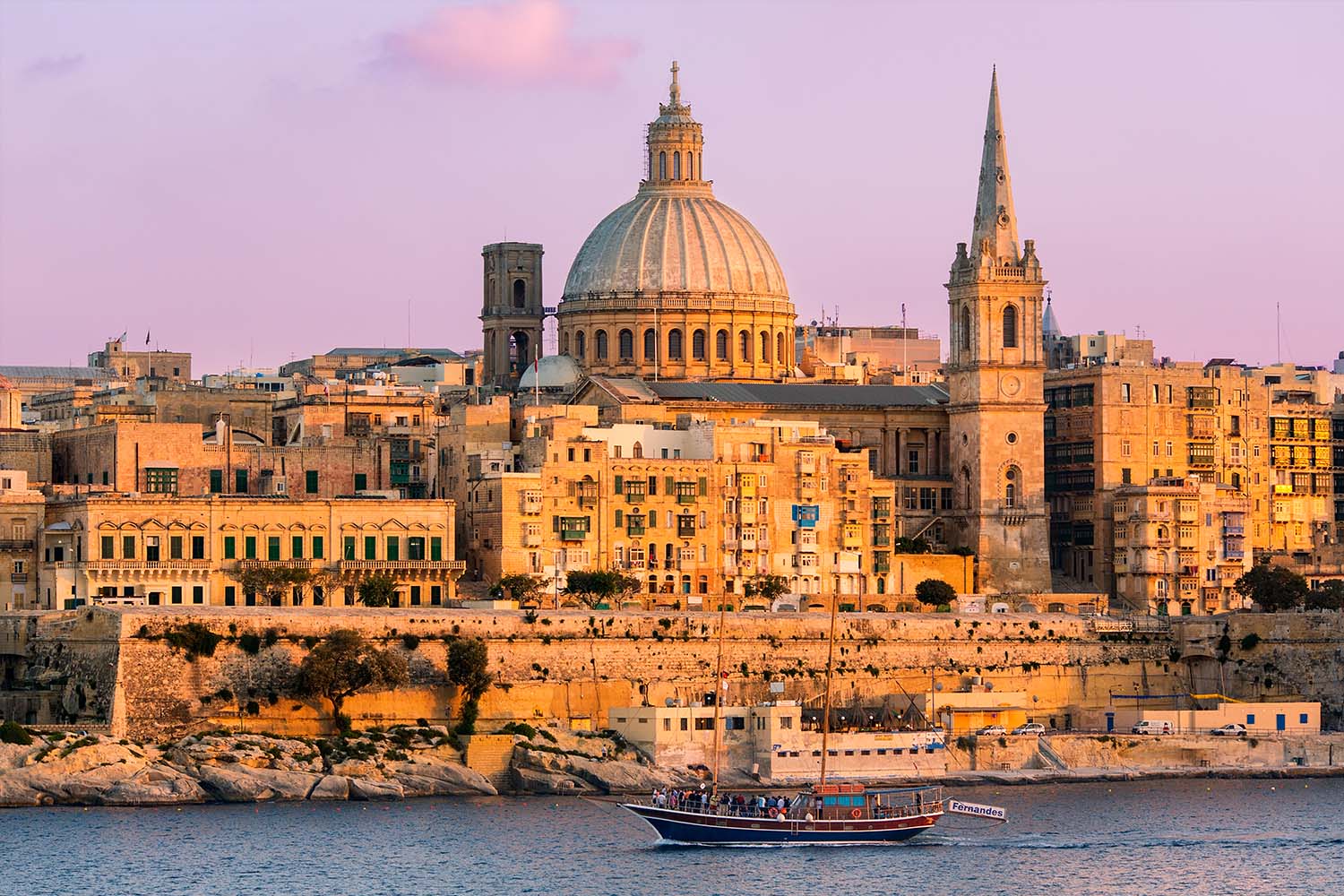
How to Get to Malta
Malta International Airport is a 20 minute drive from Valletta, offering routes on a number of major and budget carriers from European hubs and capital cities. Ferry service is also available to and from nearby destinations such as Sicily, offering perhaps the most convenient option for those looking to hop around the region.
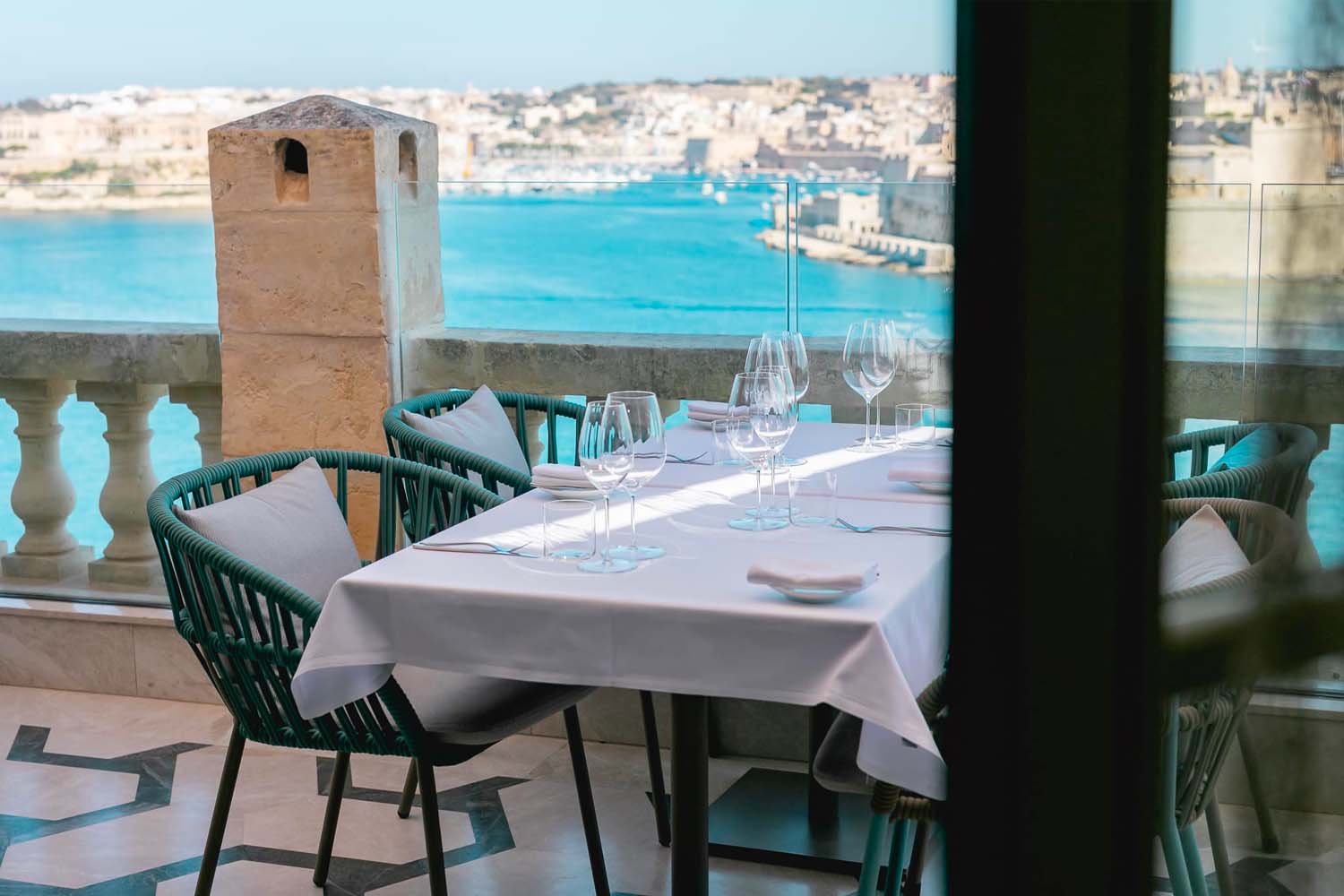
Where to Stay in Malta
Located on St. Barbara Bastion and overlooking the Grand Harbour, the Iniala Harbour House has emerged as the swankiest address in Valletta since it debuted in November 2020. The property consists of five converted buildings dating to the 1600s, with a collection of 23 rooms and suites. Iniala ties together the heritage of its site with the contemporary influence from a sister hotel in Thailand to deliver its own take on décor and style, while showcasing sculptures and paintings from local artists, as well as restored features from the original structures.
A basement spa includes a small, sleek indoor soaking pool, while across the street in a separate building the hotel offers a two-story fitness center. More buildings and spaces are being added to the mix, too, with plans to unveil an outdoor pool and bar to the property in the years ahead, along with added tiers of residences and suites.
Switch locales and head to another historic setting with a stay at The Xara Palace, a Relais & Châteaux property. The hotel is housed within a palatial estate from the 17th century, tucked into the tiny alleys of fortified Mdina, right beyond its gates. Enter into a large inner courtyard and navigate its grand hallways to find your way to one of just 17 rooms, equipped with white marble floors and sweeping views from its hilltop position looking down on the rest of the island from one of its highest points.
The hotel has a rooftop terrace and several on-site restaurants and bars. There’s also an off-site pool and events space known as the Xara Lodge, with on-demand car service shuttling guests the five-minute drive for a few hours of sunny R&R.
Malta Will Pay Foreign Tourists to Visit This Summer
An island getaway, with bonus cash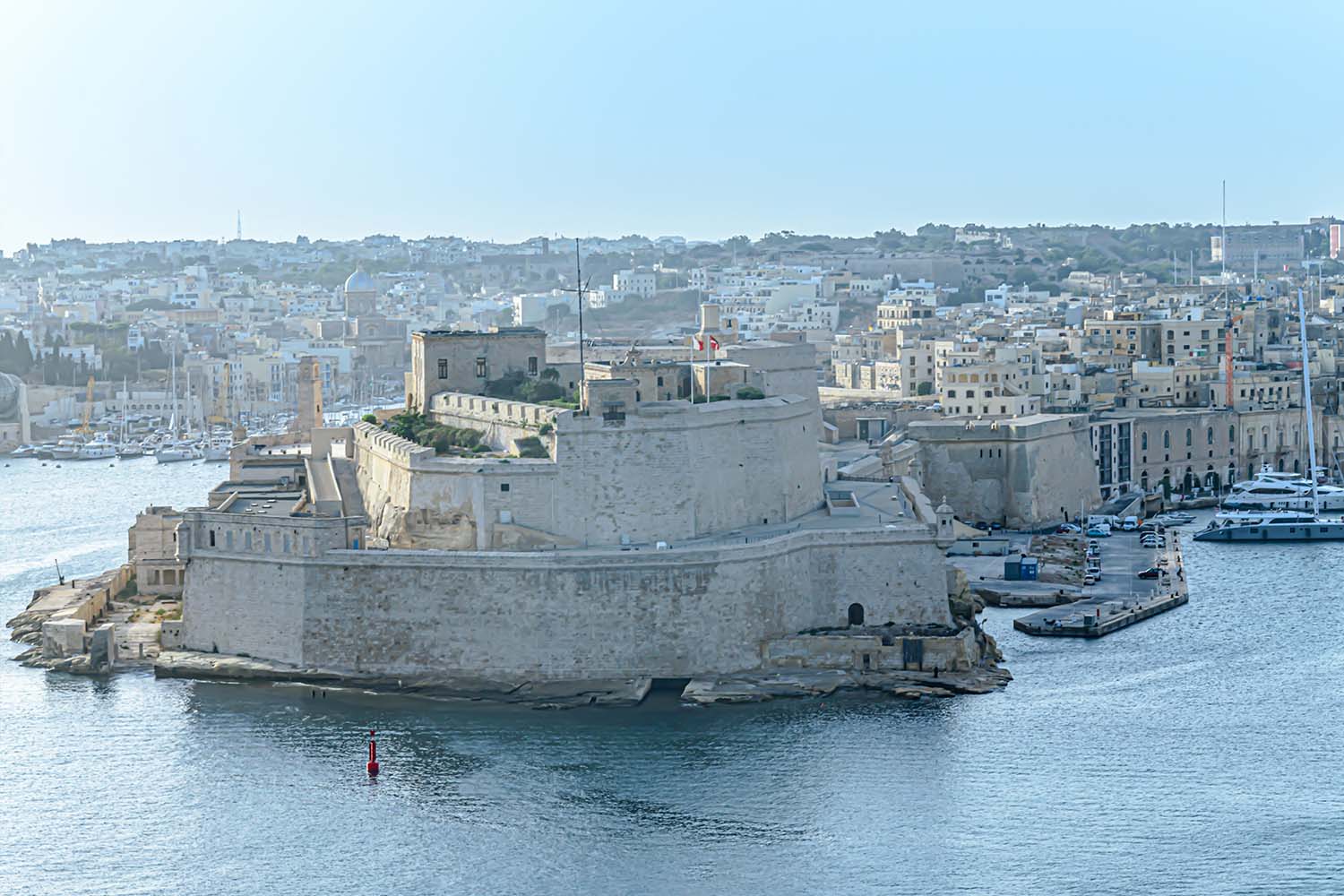
What to Do
Spend an afternoon touring Valletta, the whole of which is regarded as an UNESCO World Heritage Site, and soaking up its architecture and lure. The old town’s walking streets and sand-colored stone structures hold another secret or tale around every corner.
Malta’s myriad fortifications were completed after the Knights Hospitaller successfully repelled a far larger invading force from the Ottoman Empire. Apparently deterrence did the trick in preventing future battles, as the fortifications were never put to the test. That leaves them stoic and intact to this day, even after the extensive damage sustained during the bombing of the island in World War II.
There are strings of monuments related to that saga, though plenty more from its earlier days, too. The Hospitallers were so named for their function as medical care providers. The Sacra Infermeria, or the Holy Infirmary, still stands, now serving as a conference center. Fort St. Angelo, the original home and base of the knights, is located across the harbor from Valletta, while the National War Museum is now housed within Fort St. Elmo, a star fortress within the larger walled city.
Be sure to walk through the Valletta City Gate and head to the Upper & Lower Barrakka Gardens. “They have the most spectacular view in Valletta,” Cali says. Then visit St. George’s Square, the main plaza in front of the Grandmaster Palace and St. John’s Co-Cathedral. There, you can find Caravaggio’s The Beheading of Saint John the Baptist; the legendary Italian painter spent a year living on Malta after fleeing from Rome because of legal entanglements. Head outside the city to Paola to visit the Ħal Saflieni Hypogeum, a series of subterranean burial chambers that date to at least 3,000 BC.
Malta is perhaps best enjoyed by getting onto the water, whether with quick ferry hops across the harbor to its many little villages and towns, or with longer excursions around the island or to its neighbors. Gozo island is home to the Ġgantija temple complex, whose structures are said to be between 500 and 1,000 years older than the Egyptian pyramids. The waters around the island though may hold even greater appeal, as it ranks among the world’s best diving destinations.
The small town of Mdina, with its famed gates and fortress and winding walking streets lined with small plazas and palazzos, can be explored at a leisurely clip. With that as your base, plan to head to Ghajn Tuffieha beach, a scenic local spot along Malta’s northwestern coast. The area is filled with beaches and hiking paths connecting them, with long walks traversing the seaside cliffs serving as a favored form of recreation. For an incredible sunset, consider heading to the Dingli Cliffs.
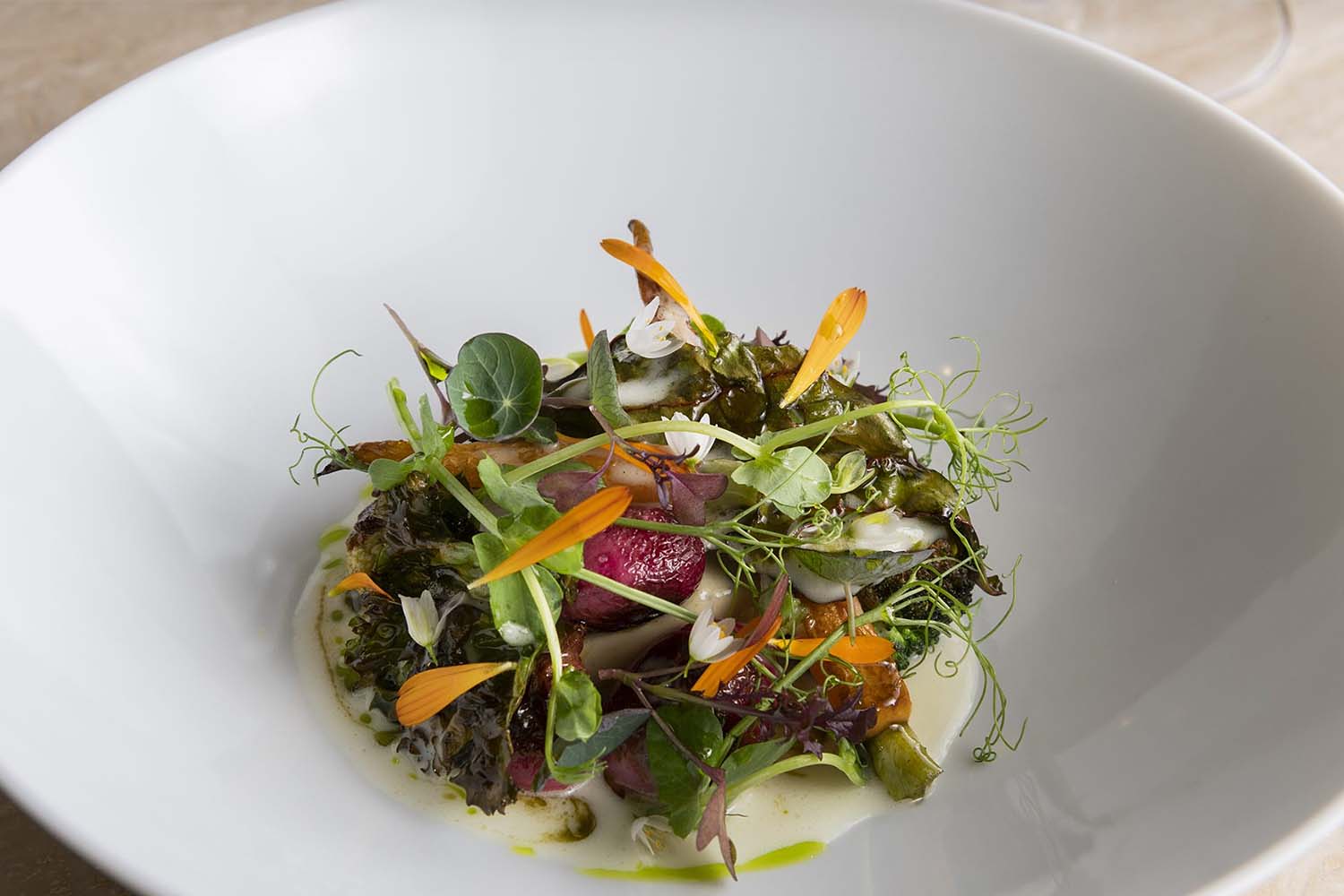
Where to Eat & Drink in Malta
Prepare for an intensive introduction into Maltese flavors and ingredients at ION Harbour by Simon Rogan, the British chef who’s garnered three Michelin stars at his flagship restaurant L’Enclume. He’s already brought home ION’s first Michelin star on the strength of a 13-course tasting menu highlighting vegetables and seafood, with every farmer and purveyor called out by attentive servers. A few of Rogan’s signature dishes and techniques make an appearance at ION but always with a Maltese spin, while the rooftop dining space above Iniala Harbour House offers a sensational setting with an unparalleled view of the Grand Harbour.
Whether you’re staying at the Xara Palace or just passing through Mdina, de Mondion is a must. The Michelin-starred restaurant is located on its rooftop perch, so you’re dining atop a palace within a centuries old fortified city, a very Game of Thrones-style experience. The seven-course tasting menu focuses on Maltese ingredients and culinary traditions and can be optionally served with an all-Maltese wine pairing. From your table, you’ll be able to view several of the vineyards the restaurant sources from, along with the gardens where the restaurant grows much of its own produce.
All of that fine dining needs to be balanced out, so it’s a good thing that Malta has plenty of quick street eats to explore. Get started with ftira, circular flatbreads used for sandwiches and paninis. Grano in Valletta is a top choice. Pastizzi are savory, flaky pastries stuffed with either ricotta or curried peas, the latter of which is akin to an Indian samosa. Try them at Cafe Cordina or Champ Pastizzeria (where, unfortunately, a worker who took great care of us died at the age of 41 after suffering a heart attack several weeks after a visit this summer; a few pastizzi in his honor would be a fitting tribute, perhaps).
Excellent pizza can also be found in abundance, including Sally Port Pizzeria and San Paolo Naufrago. For a touch of nightlife, head to The Rootz Bar for live music, Trabuxu Bistro for wine and Alchemy for cocktails. Other recommended restaurants in Valletta include Palazzo Preca, Grain Street and Da Pippo Trattoria. Head out of Valletta in search of another sunset and visit Guadalupe in Sliema, an Italian bistro and bar on a boat. In Mdina, a few notable options include the tea garden, cafe and wine bar Fontanella, Is-serkin (specializing in pastizzi), The Medina Restaurant and Fra Angelico Wine Bar & Bistro.
This article was featured in the InsideHook newsletter. Sign up now.
